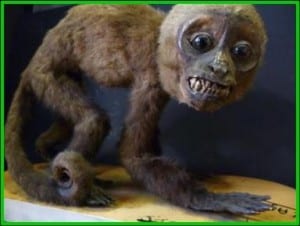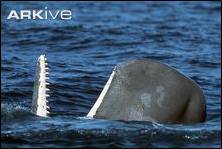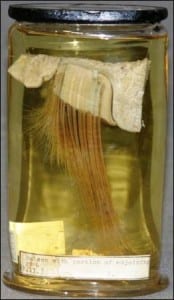Specimen of the Week: Week Sixty-Nine
By Emma-Louise Nicholls, on 4 February 2013
 Every Specimen of the Week I have done thus far, I have realised, has nearly always been a whole animal. Not to say that’s a bad thing but I do feel a vast number of extremely super duper specimens, that are essentially ‘body parts’, have been overlooked. Subsequently this week’s specimen is a body part, but don’t worry it’s not as gruesome as it sounds in the slightest, no need to put off reading the post until after dinner. This week’s Specimen of the Week is…
Every Specimen of the Week I have done thus far, I have realised, has nearly always been a whole animal. Not to say that’s a bad thing but I do feel a vast number of extremely super duper specimens, that are essentially ‘body parts’, have been overlooked. Subsequently this week’s specimen is a body part, but don’t worry it’s not as gruesome as it sounds in the slightest, no need to put off reading the post until after dinner. This week’s Specimen of the Week is…
**A Lump of Baleen**
1) YES this IS a great specimen, lower that eyebrow. Come on, let me talk you through it. See the toothbrush-esque part with the fluffy hairy looking tips? That’s the baleen. We’ll come back to that in a minute. The white mass of mushy looking polystyrene at the top is gum. As in the gum from the mouth of a whale, not a wedge of chewing gum used to hold the baleen in place because our budget is too tight to stretch to proper mounting materials.
2) There are 86 species of cetacean (set-A-shun) which is the group that includes all dolphins, whales, porpoises and similar looking, closely related aquatic mammals, sporting fins instead of hands and feet. Out of those, there are only 14 species of baleen whales, the rest of them are called toothed whales.

A sperm whale showing off his lovely teeth.
Image taken by Michael Nolan
(SplashdownDirect.com). Image taken from
www.ARKive.org
3) What’s the difference? Toothed whales have… teeth. Lots of ’em (mostly). Baleen whales do not. Rather, they have an upwardly arching top jaw with large fine-toothed combs hanging down. These are the baleen plates which are not related to teeth and are made up of keratin, the same stuff that forms our finger and toe nails. As the whale takes in a huge mouthful of water, the combs act like sieves and trap the yummy detritus material that is good to eat, which can then be dislodged with the tongue whilst the unwanted water is squeezed out. Like a lemon squeezer that keeps the pips from falling in your juice, only the reverse. Unless you want to eat the pips and throw away the juice.
4) What is the largest mammal on the planet? Correct- the blue whale. What is the largest animal to ever have lived on earth in the entire 4.6 billion year history of the planet? Correct again (I should imagine)- the blue whale. The blue whale grows up to 27 m long. Twenty seven metres long. The need to spell that out with words is clear. Their heart weighs as much as 900 kg and the penis is 2.5 m long. So imagine the size of its baleen. Phwoar.
5) In the same way that the teeth of an animal that eats fish are different to those of an animal that eats insects, the thickness and quantity of baleen plates are directly related to the prey type of the species of whale in question. The grey whale for example, feeds near the ocean floor, and so has shorter and stiffer plates than say the humpback whale, which feeds on the surface. The baleen of the dainty plated right whales and bowhead whales are the longest and finest of the baleen plate types, because they feed on the teeny tiniest of planktonic invertebrates of all whales species. Despite being a heffing 20 m long.
Here endeth your lesson in baleen. So my padawan, to what species of whale does this specimen belong?
Emma-Louise Nicholls is the Museum Assistant at the Grant Museum of Zoology
 Close
Close



